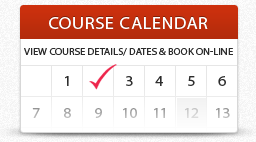LATEST NEWS
ISO/IEC 17025, ISO/IEC 17020 and ISO 15189 – Guidance documents help to interpret these standards (May 2015)
ISO/IEC 17025, ISO/IEC 17020 and ISO 15189 provide accreditation criteria for test/calibration organisations, inspection bodies and medical laboratories respectively.
These standards also provide a framework for good management and technical practice in which laboratories and inspection bodies can develop their management systems.
Whilst these standards focus on aspects of quality management relating to laboratory and inspection activities, the range of services that can be accredited is incredibly diverse. “This means that ISO/IEC 17025, 17020 & ISO 15189 cannot be prescriptive in their approach,” observes Tim Alcock, BywaterExcel’s Management Systems Director, “and as such, many organisations face problems with interpretation in their specific fields.” This has generated a need for further guidance and interpretation over and above the requirements of the standards.
Here we provide some reference documents which may benefit laboratories and inspection bodies in applying the requirements of these standards, by better understanding the terminology and providing further guidance in the areas of measurement (calibration, traceability and uncertainty), method validation and auditing.
Terminology Guidance References
Understanding terminology is the first step to interpreting any standard. The primary guides relating to terminology in the fields of quality and metrology are ISO 9000:2005 and ISO/IEC Guide 99 respectively:
- ISO/IEC Guide 99 in the form of JCGM 200 is available free of charge from the Bureau International des Poids et Mesures (BIPM)
When it comes to analytical testing, Eurachem has developed a publication which provides terminology used in analytical measurement:
- 'TAM' which is available in a number of languages.
Calibration and Traceability Guidance
One of the fundamental principles embodied within ISO/IEC 17025, ISO 15189 and ISO/IEC 17020 is that of calibration and traceability of measurement.
Complete our free checklist to assess your own calibration system:
Whilst ISO/IEC 17025 provides a fairly extensive set of requirements relating to this area (less so in ISO/IEC 17020), further guidance is available in ISO 10012:2003 Measurement management systems - Requirements for measurement processes and measuring equipment, covering specific aspects such as determination of calibration intervals, calibration records, etc.Additional guidance is also provided by accreditation bodies. For example UKAS produces a number of ‘LAB’ and ‘Technical Policy Statements’ documents which are freely available on their website:
- www.ukas.com These include guidance on calibration and traceability of various instruments, volumetric glassware, temperature and dimensional measurement equipment.
- BywaterExcel’s Calibration & Control of Measuring Systems in-house training course provides clarity and knowledge in this area.
Measurement Uncertainty
In order to determine whether equipment is capable of making the required measurements and to quantify the variation or results obtained in the performance of test work, it is necessary to perform studies to establish the uncertainty of measurement of calibration or test methods. Such studies also provide invaluable data which can be used to improve methods and the resulting precision. BywaterExcel’s training course:- Measurement Uncertainty explores this further
The ISO document relating to measurement uncertainty is ISO/IEC Guide 98-3 'Guide to the Expression of Uncertainty in Measurement', which can be downloaded free from:
- BIPM in the form of JCGM guides. This document is, however, complex to use and simplified guides are available from:
- UKAS as M3003 under their publications section, and from:
- National Physical Laboratory which also produces a number of guides relating to measurement understanding and calibration principles.
Finally, ISO 5725 provides guidance for the estimation of trueness and precision of analytical methods and various other ISO guides are available for estimation and expression of uncertainty in microbiology in specific fields, for example ISO/TS 19036:2006 Microbiology of food and animal feeding stuffs - Guidelines for the estimation of measurement uncertainty for quantitative determinations. These are available from the ISO website: www.iso.org.
Method Validation
ISO/IEC 17025 and ISO 15189 both require that new and modified methods are subject to validation. Though little guidance exists for this in areas such as electrical and mechanical testing, for analytical methods Eurachem’s:- The Fitness for Purpose of Analytical Methods provides excellent guidance.
Internal Audits for ISO/IEC 17025, ISO/IEC 17020 and ISO 15189
All quality management system standards require the implementation of an internal audit programme to provide an assurance of the quality of work undertaken and to identify improvements. There are additional requirements within the Laboratory and Inspection system standards expected by accreditation bodies, including the conduct of both ‘horizontal’ and ‘vertical’ audits, as well as the performance of witness audits to demonstrate the competence of personnel performing the applicable calibration, test or inspection work. Accreditation bodies also have greater expectations in terms of the detail recording of audit findings. Standards such as ISO 19011 provide generic guidelines on the conduct of audits, but the additional requirements of accreditation bodies are not specified.
BywaterExcel is able to provide extended guidance through its applicable Internal Auditor and IRCA certified Lead Auditor training courses:
- ISO/IEC 17025:2005 Internal Auditor
- ISO/IEC 17025:2005 Lead Auditor
- ISO/IEC 17020:2012 Internal Auditor
Further Guidance and Support
BywaterExcel has been delivering specialist training programmes to Laboratory, Testing and Inspection Bodies for a number of years. For further details of these training courses, please call our Training team on 0333 123 9001 or email us at [email protected].












